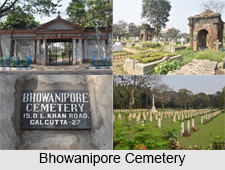 Bhowanipore is the oldest locality in the southern part of Kolkata. It was established by the local Bangalee Zamindars like the Mallicks and the Boses of Elgin Road.
Bhowanipore is the oldest locality in the southern part of Kolkata. It was established by the local Bangalee Zamindars like the Mallicks and the Boses of Elgin Road.
Location of Bhowanipore
Bhowanipore is located just south of the Lower Circular Road. It is the second largest locality in South Kolkata after Ballygunge. Bhowanipore has its boundary touching the AJC Bose Road, the Maidan, Victoria Memorial and consists of well-known and posh localities like Elgin Road, Gokhale Road, Woodburn Park, Bakulbagan Road, Harish Mukherjee Road, Beltala Road, Townshend Road and parts of Chakraberia and Lansdowne.
History of Bhowanipore
Bhowanipore has the rich history. It was established in the early 19th century, with the hands of British and Bengali zamindars. Now Bhowanipore is a posh area in Southern part of Kolkata after Alipore. In the early 19th century, Bhowanipore was just a small village on the southern outskirts of the city of Calcutta. By the early 1850s it developed into a favourable home to many immigrants into the city from the countryside of East Bengal. These immigrants were very literate and prosperous and just wanted to settle outside the more famous localities of northern Kolkata.
Bhowanipore in Modern era
The Lower Circular Road had just been constructed and the area just south of the road became home to many Indians who wanted to live in proximity to the city and yet away from it. Many Englishmen also took fancy to the area and they also began settling in the area, but were far outnumbered by the local populace.
Geography of Bhowanipore
Bhowanipore was bounded by Lansdowne Road to the east, Russa Road to the west and the Hazra Road to the south. But it expanded much more to the west, far beyond Harish Mukherjee Road to Adi Ganga.
Landmarks in Bhowanipore
Bhowanipore has many places of attractions. These are Netaji Bhawan (Netaji Museum), Bhawanipur Cemetery and the House of Sir Ashutosh Mukherjee. Jadu Babu`s Bazaar on Asutosh Mukherjee Road was the heart of south Kolkata before Gariahat even developed. It is still the major market for the locality.
Cinema Halls in Bhowanipore
As, this place is one of the old residential area, it has many old cinema halls. Purna, Indira, Bijoli are the old cinema halls screening Bengali and Hindi movies.
Related Articles
Kolkata
Birla Planetarium
Culture of Kolkata
Economy of Kolkata
Netaji Museum
West Bengal



















